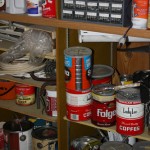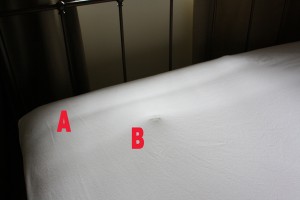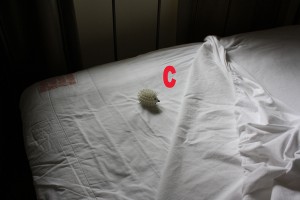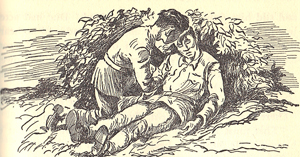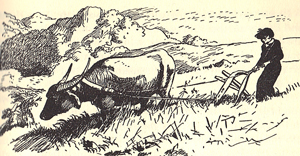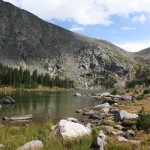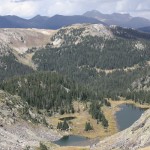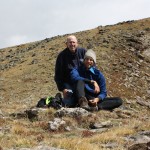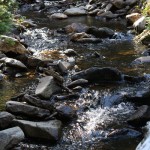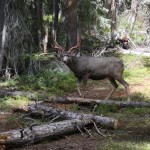As a writer, I’ve received my share of rejection notices. My favorite, for its pointed sarcasm, came my way after I tried to bluff the submissions editor of a national children’s magazine. Here’s the smackdown: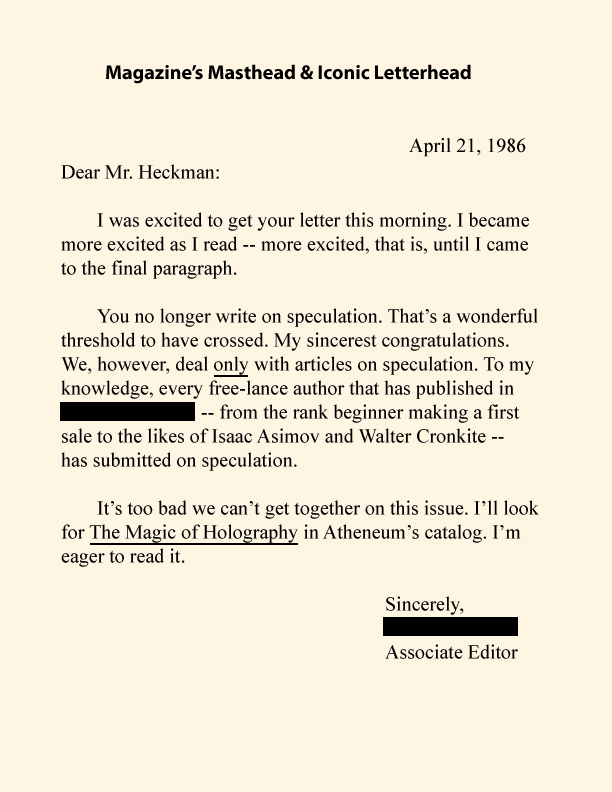
Category Archives: Memoir
Is hoarding genetic?
After my parents died, my siblings and I were faced with the task of sorting through the detritus of their lives. After their eighty-plus years–more than fifty spent in the same house–this amounted to a stash that could be measured only in units commonly known as “dumpsters.” Typical of our discoveries were:
- An three-foot bureau drawer full of unused candles,
- A bushel of rubber stamp blanks, and
- Hundreds of oleomargarine tubs, carefully washed, stacked, and secured in plastic bags.
These findings filled me with dread, as they reminded me of the contents of my own basement. Was I wading through my own legacy foreshadowed? Is hoarding genetic?
Immediately I began assembling excuses. One basic goal as a homeowner is to conduct routine maintenance without having to go to the hardware store for tools and materials. You can’t do that without a healthy inventory of stuff that might eventually come in handy for repairs.
And of course, even things that I no longer need could be of value to others. Those cane-backed chairs, for example. How can I in good conscience send them to the landfill when with a few hours’ worth of skilled attention, they could be returned to full use in someone else’s dining room?
In the same way, I’m temporarily holding some things until their potential reveals itself.
And let’s not forget, a good third of the contents of my basement belongs to my grown children, who use the space shamelessly as a free storage facility.
Sure, I’ve amassed a wee bit of useless junk. But I have no candles, rubber stamp blanks, or margarine containers. And I’m no Hippie Tom–now there’s a hoarder’s hoarder.
I’m just a guy who’s his parents’ son, and how can you blame me for honoring their memory as I see fit?
What’s your status–hoarder? Collector? Waste management expert?
The classic jokes never get old
Once upon a time my then-seven-or-eight-year-old daughter had a favorite joke she liked to tell at family gatherings.
Here’s how the story came to mind on laundry day, 25 years later…
Imagine that just tucked-in clean sheet (A) represents a newly installed wall-to-wall carpet.
Imagine that a carpet layer’s hammer is vigorously applied to an assumed missing pack of cigarettes (B)–represented here by errant tumble-dryer hedgehog (C)–by lazy workmen hoping to hide their shoddy workmanship.
Imagine the now-flattened carpet as the homeowner delivers the following punchline: “By the way, have either of you seen my pet hamster?”
Forgotten books: The Adventures of Duc of Indochina
Echoes of a distant childhood and a lost war everlasting…
From 1958 to 1963 I attended the parish school of the Saint Robert Bellarmine1 Catholic Church in Merrill, Wis. Although I forgot most of the experience, a few memories endured. One involved a book with a half-remembered title and a vague sense of nobility.
Why did I hang onto that particular mental scrap for so long? And why did it carry a positive association?
St. Bellarmine’s was a typical small town parish, oppressive in its alligence to dogma. My 7th- and 8th-grade years passed under the eye of a raptorial nun who called herself Constance. Sister Constance’s reputation as a disciplinarian remained more vivid than her ability as a teacher. That’s because her tool of choice was an 18-inch wooden ruler applied sharply to the palm of the hand, a device and a technique that our school’s namesake inquisitor would’ve sneered at.
This isn’t say that those years were without joy, in between paddlings. One routine that I remember fondly a half century later is this: Sister Constance reading to us as a class, daily I think, in a brief but welcome respite from her rigid schedule. Her book selection must’ve been mostly uninspired because later I could recall only a single title, and that imperfectly. But I still thought of it and kept searching from time to time…
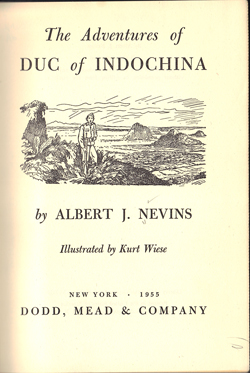
Decades later, it surfaced: The Adventures of Duc of Indochina. And I had to re-read it.
I admit that I was wary of Duc and his adventures, having been disappointed by other re-enacted memories. I feared that the book would turn out to be a clumsy and superficial capitalist or missionary screed. (After all, Sister Constance had a job to do in an era not far removed from “adopting pagan babies” and applauding Sen. Joe McCarthy.)
But after reading it, I’ve been amazed by the book’s many qualities. The story concerns teenage Duc’s attempt to save his family from the civil war waging around them in what is now called Vietnam. Failing that, he begins a two-year quest to reunite what remains of his family. Through it all, Duc is loyal to family and community and faithful to his ideals, which include a harmonious relationship between his own Christianity and his neighbors’ mixture of Buddhism, Confucianism, and Taoism.
Duc of Indochina is a well-researched, largely even-handed tale of innocent people destroyed by a political conflict they didn’t choose. The consequences of Duc’s loyalty to his village and its modest way of life, though unfair, are real and unavoidable. As Nevins puts it:
There were long rows of graves in the cemetery, and each tomb had a concrete slab giving the man’s name, his unit, and the date of death. There was one Vietnamese name after another, and under each name was the legend, “Mort pour la France” (Died for France).
“That is false,” Duc thought to himself. “Those men died for Vietnam, not for France! They did not die so that their children would be tenants in a house owned by a foreigner.”
Sure, author Albert J. Nevins dumps explanations into the narrative like overpacked duffel bags, but it’s usually only a paragraph or two at a time and, with at least one good fact per paragraph, that’s a good trade. Nevins also speaks with a formality that sometimes sounds corny to the modern ear, but is driven by his desire as a journalist to get the details right.
The Catholic clergy in the story are secondary figures, generally decent men with modest ambitions for themselves and their followers. The Vietminh rebels (precursors of the Viet Cong) come up for more criticism than their French-led opponents, the Vietnamese army. The former are cast as brutal, unempathetic ideologs while the latter “were spick-and-span, determined to show their fellow nationals that their army was capable of protecting the country and the people.” (Of course, President Diem2 taught us otherwise.
After excaping the Vietminh, Duc fights with the French at Dienbienphu. Their defeat there led to the surrender that ended France’s long occupation of the region. It also paved the way for the U.S. to step into that quagmire of death and destruction on its own. (Let us never forget how that turned out.)
Nevins, a Catholic priest, was not unbiased. He made his opposition to the Communist Vietminh clear, calling them “Red hordes.” But as a journalist, he respected his title character and came down squarely on the side of ordinary Vietnamese who wanted only to live their lives unmolested by political theory.
The Adventures of Duc of Indochina ends with the teenage Duc reuniting with the few family members and friends who survived, and fleeing with them to what became South Vietnam. Despite his personal suffering and loss, Duc remained undaunted as he looked forward.
“I see the blood and glory of a thousand yesterdays.”
“Can you see tomorrow?”
“No, Sap. That I cannot see.” Duc straightened up and put his hand on his friend’s shoulder. “We must make tomorrow.”
So that’s what I retained all these years: This fictitious stranger’s optimism made all the more poignant by the knowledge of what happened to his Vietnam after his story ends. Sister Constance might’ve intended to inspire us with a tale of Catholic fortitude, but what I got out of it was something simpler. Upon reflection, given my experience of a wooden ruler compared to weapons of war, I had a renewed appreciation of my own good fortune.
1 Among other duties, Robert Bellarmine (1542–1621) served Pope Clement VIII as a Cardinal Inquisitor. In that position, Bellarmine defended the faith against heretics up and including execution and helped persecute Galileo Galilei. We students were oblivious of this background. If we had known, of course, our budding adolescent sarcasm would surely have been merciless. Return
2 Nevins, writing in 1955, characterized South Vietnam’s first president, Ngo Dinh Diem, as “an honest Nationalist.” However, like Robert Bellarmine, Diem was not what he seemed. Also a Roman Catholic, the new president proved to be remarkably corrupt and went on to oppress followers of other religions, eventually making enough enemies to be deposed and assassinated. Return
Rocky Mountain hiatus (2/2)
Post 2 of 2: A few weeks ago I took a backpacking trip in Rocky Mountain National Park with my son, my return to a particular high country campsite after 40 years. Here’s the second half of my notes, edited to seem even more insightful than the first.
THURSDAY, Sep 6
Made Timber Lake today, a “long, hard slog.” Quite a few day trippers up here, mostly fishers. One group of 3 with day packs, shorts and sleeveless shirts just left for the trailhead nearly 5 miles away. It’s 5pm, with maybe 3 hours of light left. Good luck with that. I’d hate to be stumbling around on the trail in the dark.
.
Cooking has been a challenge. Fires are prohibited and only stoves allowed. This means balancing cooking equipment, eating utensils, ingredients, and cooked food on rocks, logs, or the ground. So I was delighted to find the only flat spot in the entire park at Rockslide Campsite: the stump of a dead pine felled by a jack with a Euclidean sensibility. Even better than merely flat, the cut surface is within 1-2 degrees of perfectly level, as the water in my bottle reveals.
A fisher coming down from the lake alerted us to moose ahead. Minutes later we saw them, a cow and her calf, both aware of us, alert, but unwilling to move from their creekside forage 40 yards away. We paid homage and moved on.
Timber Lake is smaller than I remembered, and comprised of three distinct basins, but still cold and still clear.
Rain during the night, light rain. Cozy.
FRIDAY, Sep 7
Cold, clammy morning. Clouds began to break apart about 11, allowing a trip up Mt. Ida. Rain kept menacing, however, with the temp alternating between 50 and 70 degrees, depending on the sun. Got within a few hundred feet of the 12,800-foot summit, when hail and approaching dark clouds hung with streamers of rain convinced us to turn back.
.
Nick came face-to-face with the moose cow and calf on the return trip, maybe within 20 feet. The cow quietly turned away, and after a second the calf followed. By the time we covered the 20 feet, they were out of sight.
Hail continued from the lake to the Rockslide Campsite, turning to rain just as we zipped up the tent. Sun 15 minutes later, with rain 15 minutes after that, lasting an hour or so. Ate dinner early, not knowing how long the dry spell would last.
SATURDAY, Sep 8
Hiked out with nearly the same loads we carried in (I overestimated our food needs). The sunny, cool morning was a relief, considering the five miles of lunges my legs suffered on the way down.
.
An excellent adventure, sweaty at times but always relaxed. It’s comforting to know that hard physical labor is still possible at my age, although it helps to have a good companion to set the pace and lend a hand over the tougher spots.
The trail, the lake, the mountain have all changed a great deal in 40 years, but that’s more a statement of the weakness of memory than the power of nature. The two trips could not have been more rewarding in their different ways. I’ll cherish them both, the one when I wondered what I was going to make of myself and the one when I knew and wondered if it was too late to do better.
Rocky Mountain hiatus (1/2)
Post 1 of 2: A few weeks ago I took a backpacking trip in Rocky Mountain National Park with my son, my return to a particular high country campsite after 40 years. Here’s the first half of my notes, edited to seem more insightful.
TUESDAY, Sep 4
We reached Timber Creek Campsite–3 miles from the trailhead in 3 hours–with no signs of altitude sickness. The trail up to the campsite would look exactly like Timber Creek if it were under water.
.
Flecks of light in the creek–iron pyrite. I wish my 2-year-old grandson Oliver were here so we could pan for gold (son Nick is no fool).
I estimate one-half of the trees on the mountainsides are dead. (Ranger later says they’re the work of four kinds of pine beetles, all native to Colo., which are usually held in check by harsh winters. Within a few years, Rocky Mountain National Park will burn to the ground. Just a heads up, taxpaying nature-lovers.)
I’m going to get sunburned! But it sure feels good now.
A mule deer wandered through camp soon after the tent was up and I was changing out of my shorts. He got as close as 15 feet over the course of 15 minutes. His new antlers were bright red and festooned with partially shed velvet, which dreadlocked around his head. After losing interest in us, he moseyed off to rub his unwanted dreads against some bushes.
In bed from 8pm to 9am–slept maybe 9 of the 13 hours while trying to adjust to mummy bag confinement and the cold (mid 30s, I’d say). Thought I heard a bear in the night playing bongos on our food containers, but they were untouched in the morning.
WEDNESDAY, Sep 5
Climbed to Long Meadow today, a short (1 mile) hike up a steep trail criss-crossed with tree trunks and other guerrilla-like hazards. The meadow was open, golden and still. With more than a mile of grassland in sight, the only wildlife we saw were several gray jays and an eagle.
.
Bear scat everywhere we hiked. At last, the answer to a long-pondered question: No, he shits on the trail.
Water filtered from Timber Creek is the most refreshing I’ve ever drunk–cold and thin, like January air, with a taste like the essence of hydrogen and oxygen.
Rocky Mountain hiatus, Part 2.
Then, meet Now
Next week I’m off to Rocky Mountain National Park for a short backpacking trip. I’ll be returning to a campsite that I first visited in 1970. Then I was hitchhiking from Madison, Wis., to California and back, and found myself dropped off in Estes Park, Colo.
I had inadequate equipment for backcountry travel, even for that era, but on a whim I snagged a permit for a lakeside campsite chosen at random. The trail was five miles in, climbing from 9,000 feet to 11,000 feet. No sweat, I thought, a remarkably blasé attitude for someone who ordinarily lived at 863 feet above sea level and carried nothing more than books between classes.
Still, I was young then and fairly healthy, and, as they don’t say but should: Ignorance is not only bliss; sometimes it’s the only way things get done. I made it to the campsite and even beyond, to the continental divide, another 1,800 feet above the lake.
The trip was an experience of extremes. On the one hand, misery. My boots were barely better than those worn in Braveheart. I froze at night in a sleeping bag you could almost see through. My meals were a routine of peanut butter and bread.
On the other hand, magnificence. Peaks to the horizon on all sides, the views devoid of human activity. Quiet consisting only of wind and other species’ voices. And the stars! The glorious stars whose number and whose light was ten thousandfold what I was used to seeing from the bottom of the atmosphere.
In those days I had no life plan, no foreseeable career, no possibility of family other than the one I was born to. In short, I was a slacker a full generation before the term was coined. Alone in the wilderness then, I wondered what my future would be like in years to come, and how I would get there.
Considering my prospects four decades ago, I eventually got damn lucky with my marriage, children, and work. I don’t know what I did to acquire such a fulfilling life, much less deserve it. All I know is that I’m reaching back in time to say, Hey, I made it. And as proof of my good fortune, on this return trip I won’t be alone. I’ll be climbing with my 27-year-old son, Nick. Magnificent.
Then, meet Now.


